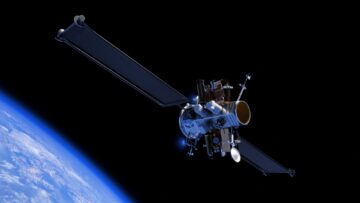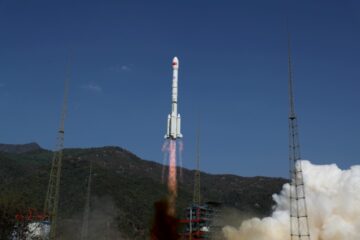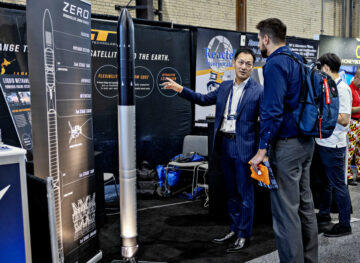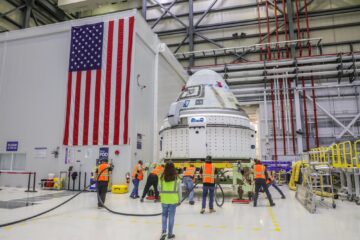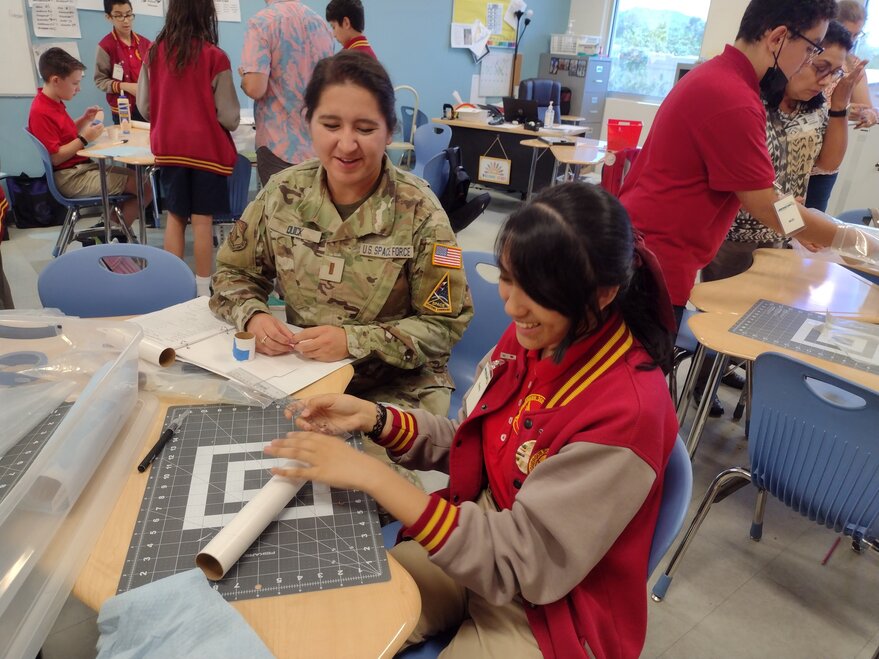
SAN FRANCISCO – Attracting a talented workforce is a high priority for Scott Erwin, chief scientist for the Air Force Research Laboratory Space Vehicles Directorate at Kirtland Air Force Base in New Mexico.
“If we don’t hire the best and brightest, it’s going to definitely impact our ability to do science and technology research, and keep up with competitors around the globe,” Erwin told SpaceNews.
As a result, AFRL’s Space Vehicles Directorate along with other military space organizations at Kirtland, including the Space Systems Command Innovation and Prototyping Directorate and the Space Rapid Capabilities Office, are funding science, technology, engineering and math (STEM) education, expanding internship programs and bolstering local and long-distance recruitment efforts.
Since 2019 when Congress established the U.S. Space Force, demand for military, civilian and contractor space professionals across the country has grown. Demand is particularly acute in New Mexico, a state with about 2.1 million employees.
“Space is really coming into its own as far as the opportunity for launching lots of different space vehicles as well space systems,” said Stanley Straight, technical director for the Space Systems Command Innovation and Prototyping Acquisition Delta. “We really need to bring our workforce up to date to help us leverage that for national defense.”
To meet growing demand, military space organizations seek to attract workers living in New Mexico and encourage other people to move there. Space RCO recruitment campaigns highlight New Mexico’s low cost of living, abundant outdoor activities and growing importance as a hub of military space activity.
“We’re looking for all ranges of talent, not just engineers,” Straight said. “We need public affairs people, contracting officers, finance personnel and program managers.”
Internships and Fellowships
AFRL brings high school, college and postgraduate researchers to Kirtland for summer internships. The goal is to “expose people to some of the things we do, because some of the things we do here are pretty cool,” Erwin said. “They can be offsets for things like not being able to pay people as much money” as private industry.
Science and engineering staff members at AFRL publish research topics online. Students can apply to work on specific topics.
“Those topics run all the way from things that are appropriate for a freshman in high school to advanced research, where we’re writing papers for journals and conferences for a PhD candidate,” Erwin said.
AFRL also offers postdoctoral research fellowships through the National Research Council’s Research Associateship Program.
“Some of the postdoctoral research fellows may decide to stay and work for us full time. Some of them may go off to academia or some other research institution,” Erwin said.
In addition, university professors can apply for fellowships to conduct research alongside AFRL scientists and engineers.
“We establish great long-term relationships with these faculty who come from all over the United States,” Erwin said.
STEM Education
AFRL’s STEM Academy provides curriculum and hands-on activities for students in kindergarten through high school including rocket launch competitions and simulated Mars missions.
“We need a bigger pool of science and engineering talent in the United States, regardless of whether they come to work for us,” Erwin said.
The Space Force, meanwhile, is working with state and local governments and nonprofits like the Space Valley Coalition and NewSpace Nexus on STEM programs that encourage New Mexico students to consider space careers and stay in-state.
The Innovation and Prototyping Acquisition Delta also is strengthening ties with universities.
“We are developing partnerships with universities within New Mexico and regional universities, like the University of Texas, El Paso, to leverage those recruitment pipelines for technical as well as programmatic talent,” Straight said.
The University of Texas, El Paso, is an attractive partner for the Space Force partly because of its diverse student population, Straight said. “Within our ranks is a lot more dedication to finding the talent, no matter what their backgrounds are,” he added.
Remote Work
Out of necessity, Space Force organizations in Albuquerque also are turning to remote workers.
“We are actively hiring locally, but our strategy has expanded to even remote workers,” Straight said. “There’s a significant portion of the workforce that we need on site, but there is a good balance of work that would allow us to leverage the remote workers as well. In fact, we have a couple full-time remote contracting officers and program managers.”
- SEO Powered Content & PR Distribution. Get Amplified Today.
- PlatoData.Network Vertical Generative Ai. Empower Yourself. Access Here.
- PlatoAiStream. Web3 Intelligence. Knowledge Amplified. Access Here.
- PlatoESG. Carbon, CleanTech, Energy, Environment, Solar, Waste Management. Access Here.
- PlatoHealth. Biotech and Clinical Trials Intelligence. Access Here.
- Source: https://spacenews.com/military-space-groups-in-new-mexico-expand-recruitment-and-stem/
- :has
- :is
- :not
- :where
- $UP
- 1
- 2019
- a
- ability
- Able
- About
- abundant
- Academia
- Academy
- acquisition
- across
- actively
- activities
- activity
- added
- addition
- advanced
- Affairs
- AFRL
- AIR
- Air Force
- Air Force Research Laboratory
- All
- allow
- along
- alongside
- also
- an
- and
- Apply
- appropriate
- ARE
- around
- AS
- At
- attract
- attracting
- attractive
- backgrounds
- Balance
- base
- BE
- because
- being
- BEST
- bigger
- brightest
- bring
- Brings
- but
- Campaigns
- CAN
- candidate
- capabilities
- careers
- chief
- coalition
- College
- come
- coming
- Competitions
- competitors
- Conduct
- conferences
- Congress
- Consider
- contracting
- Contractor
- Cool
- Cost
- country
- Couple
- Curriculum
- Date
- decide
- dedication
- Defense
- definitely
- Delta
- Demand
- developing
- different
- Director
- diverse
- do
- Dont
- Education
- efforts
- el
- employees
- encourage
- Engineering
- Engineers
- establish
- established
- Even
- Expand
- expanded
- expanding
- fact
- far
- fellowships
- finance
- finding
- For
- Force
- Francisco
- from
- full
- funding
- globe
- Go
- goal
- going
- good
- Governments
- great
- Group’s
- Growing
- grown
- hands-on
- Have
- he
- help
- here
- High
- Highlight
- hire
- Hiring
- HTTPS
- Hub
- Impact
- importance
- in
- Including
- industry
- Innovation
- Institution
- internships
- into
- ITS
- jpg
- just
- Keep
- laboratory
- launch
- launching
- Leverage
- like
- living
- local
- locally
- long-term
- looking
- Lot
- lots
- Low
- Managers
- mars
- math
- Matter
- May..
- Meanwhile
- Meet
- Members
- Mexico
- Military
- million
- missions
- more
- move
- much
- National
- necessity
- Need
- New
- NewSpace
- nexus
- no
- nonprofits
- of
- off
- Offers
- Office
- officers
- offsets
- on
- online
- Opportunity
- or
- organizations
- Other
- our
- Outdoor
- over
- own
- papers
- particularly
- partner
- partnerships
- Pay
- People
- Personnel
- phd
- plato
- Plato Data Intelligence
- PlatoData
- pool
- population
- postgraduate
- pretty
- priority
- private
- professionals
- Program
- programmatic
- Programs
- prototyping
- provides
- public
- publish
- ranks
- rapid
- really
- recruitment
- Regardless
- regional
- Relationships
- remote
- remote workers
- research
- researchers
- result
- rocket
- Run
- s
- Said
- School
- Science
- Science and Technology
- Scientist
- scientists
- scott
- Seek
- significant
- site
- some
- Space
- Space Force
- specific
- Staff
- stanley
- State
- States
- stay
- Stem
- straight
- Strategy
- strengthening
- Student
- Students
- summer
- Systems
- Talent
- talented
- Technical
- Technology
- texas
- that
- The
- their
- Them
- There.
- These
- they
- things
- those
- Through
- Ties
- time
- to
- told
- Topics
- Turning
- u.s.
- U.S. Space Force
- United
- United States
- Universities
- university
- us
- Valley
- Vehicles
- Way..
- we
- WELL
- What
- when
- whether
- WHO
- with
- within
- Work
- workers
- Workforce
- working
- would
- writing
- zephyrnet

